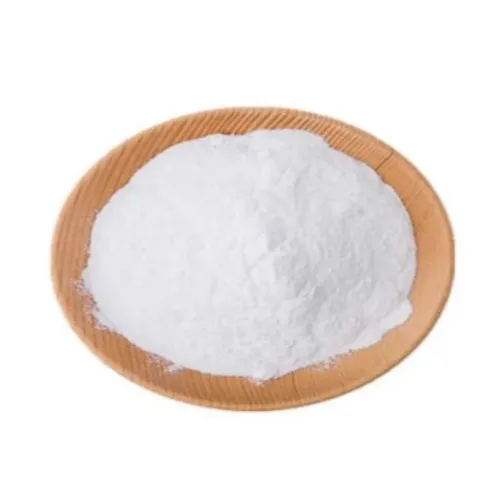Warning: Undefined array key "title" in /home/www/wwwroot/HTML/www.exportstart.com/wp-content/themes/1198/header.php on line 6
Warning: Undefined array key "file" in /home/www/wwwroot/HTML/www.exportstart.com/wp-content/themes/1198/header.php on line 7
Warning: Undefined array key "title" in /home/www/wwwroot/HTML/www.exportstart.com/wp-content/themes/1198/header.php on line 7
Warning: Undefined array key "title" in /home/www/wwwroot/HTML/www.exportstart.com/wp-content/themes/1198/header.php on line 7
- Afrikaans
- Albanian
- Amharic
- Arabic
- Armenian
- Azerbaijani
- Basque
- Belarusian
- Bengali
- Bosnian
- Bulgarian
- Catalan
- Cebuano
- China
- China (Taiwan)
- Corsican
- Croatian
- Czech
- Danish
- Dutch
- English
- Esperanto
- Estonian
- Finnish
- French
- Frisian
- Galician
- Georgian
- German
- Greek
- Gujarati
- Haitian Creole
- hausa
- hawaiian
- Hebrew
- Hindi
- Miao
- Hungarian
- Icelandic
- igbo
- Indonesian
- irish
- Italian
- Japanese
- Javanese
- Kannada
- kazakh
- Khmer
- Rwandese
- Korean
- Kurdish
- Kyrgyz
- Lao
- Latin
- Latvian
- Lithuanian
- Luxembourgish
- Macedonian
- Malgashi
- Malay
- Malayalam
- Maltese
- Maori
- Marathi
- Mongolian
- Myanmar
- Nepali
- Norwegian
- Norwegian
- Occitan
- Pashto
- Persian
- Polish
- Portuguese
- Punjabi
- Romanian
- Russian
- Samoan
- Scottish Gaelic
- Serbian
- Sesotho
- Shona
- Sindhi
- Sinhala
- Slovak
- Slovenian
- Somali
- Spanish
- Sundanese
- Swahili
- Swedish
- Tagalog
- Tajik
- Tamil
- Tatar
- Telugu
- Thai
- Turkish
- Turkmen
- Ukrainian
- Urdu
- Uighur
- Uzbek
- Vietnamese
- Welsh
- Bantu
- Yiddish
- Yoruba
- Zulu
جولائی . 27, 2024 13:01 Back to list
Applications and Benefits of Trisodium Citrate Monohydrate in Food and Pharmaceutical Industries
An Insight into Trisodium Citrate Monohydrate Properties, Uses, and Benefits
Trisodium citrate monohydrate is a versatile compound widely used in various industries, particularly in food, pharmaceuticals, and biotechnology. Its systematic name is trisodium 2-hydroxypropane-1,2,3-tricarboxylate, and it is the sodium salt of citric acid. This compound appears as a white, crystalline powder that is soluble in water and has a slightly salty taste. The importance of trisodium citrate monohydrate can be attributed to its unique chemical properties and diverse applications.
Chemical Properties
Trisodium citrate monohydrate is a tribasic citrate salt, meaning it can donate three protons (H+) in solution, which gives it buffering capabilities. The presence of carboxyl groups (-COOH) in its structure allows it to interact with various ions, making it an effective chelating agent. As a buffer, it can help maintain the pH balance in biological systems, which is crucial for enzyme function and metabolic processes. The monohydrate form indicates that it contains one molecule of water for every molecule of trisodium citrate, which can affect its solubility and stability in different environments.
Applications in Food Industry
In the food industry, trisodium citrate monohydrate is primarily used as a food additive. It acts as a pH regulator, emulsifying agent, and preservative. It is commonly found in processed cheese products, where it helps maintain a smooth texture and prevent the separation of fat and water. Additionally, trisodium citrate can enhance flavor and serve as a stabilizer in various beverages, including soft drinks and fruit juices, by preventing the precipitation of pulp and other components.
Moreover, trisodium citrate’s buffering capacity makes it a popular ingredient in sports drinks. It helps prevent acidity during intense physical activity, allowing for better hydration and performance. Its ability to chelate calcium ions also plays a role in improving absorption of essential minerals in the diet.
Pharmaceutical and Biomedical Applications
trisodium citrate monohydrate

In the pharmaceutical sector, trisodium citrate monohydrate is used as an anticoagulant, particularly in blood collection tubes. It functions by binding calcium ions, which are necessary for blood coagulation, thus preventing clotting. This property is essential in laboratory settings for accurate blood tests and storage of blood products.
Furthermore, trisodium citrate has applications in the formulation of various medications and dietary supplements. Its role as a buffering agent helps maintain the stability of active ingredients and enhances the efficacy of certain drugs. In the realm of biotechnology, it is often used in cell culture media, where it serves to stabilize pH and optimize growth conditions for microorganisms and mammalian cells.
Health Benefits and Safety
Trisodium citrate is generally recognized as safe (GRAS) by regulatory authorities when used in permissible quantities. It provides health benefits by acting as a natural alternative to more artificial additives. Its ability to regulate acidity can aid digestion, and it may even help mitigate issues related to metabolic acidosis in certain medical conditions.
However, like all compounds, it should be consumed in moderation. Excessive intake may lead to potential side effects, particularly for individuals with specific health conditions, such as kidney disorders. Therefore, it is always advisable to consult with a healthcare professional when incorporating such additives into the diet or treatment regimen.
Conclusion
Trisodium citrate monohydrate is a multifunctional compound with significant impacts across diverse fields, from food technology to pharmaceuticals. Its unique properties as a buffer, emulsifier, and anticoagulant underscore its importance in both everyday products and advanced medical applications. As research continues to explore its potential benefits, trisodium citrate monohydrate remains a critical component in improving product quality and health outcomes.
Latest news
-
Certifications for Vegetarian and Xanthan Gum Vegetarian
NewsJun.17,2025
-
Sustainability Trends Reshaping the SLES N70 Market
NewsJun.17,2025
-
Propylene Glycol Use in Vaccines: Balancing Function and Perception
NewsJun.17,2025
-
Petroleum Jelly in Skincare: Balancing Benefits and Backlash
NewsJun.17,2025
-
Energy Price Volatility and Ripple Effect on Caprolactam Markets
NewsJun.17,2025
-
Spectroscopic Techniques for Adipic Acid Molecular Weight
NewsJun.17,2025

